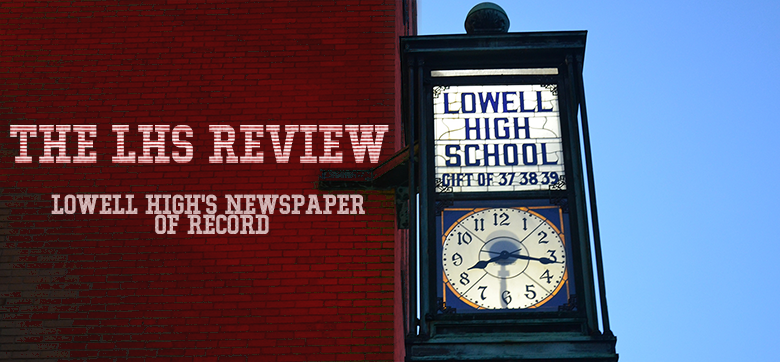
By Fallone Nguimbi
Lowell, MA- More economic opportunity, personal security and great hopes. Immigrants leave their countries to come to United States for different reasons.
New surroundings, new language and new ways of living face these newcomers regardless of the reason for coming. Learning the language is very important to newcomers. So, these students are called English Language Learners.
“Everyone who comes to a new country experiences some level of culture shock…many students experience a quiet period in which they’re afraid to speak,” said Mr. Brennan, one of the ELL teachers. “By using specific language learning techniques the ELL teacher helps the student through the culture shock experienced at school.”
Everybody is doing everything possible to get used to the new place. Stress is taking over, fear and also curiosity. The newcomers continue to experience different phases of culture shock for months and even years.
Both children and adult immigrants face anxiety over learning the English language which is why the Lowell Public Schools have ELL programs from kindergarten to 12th grade and in Adult Education programs.
“This program was created for couple of reasons…. Some of the reasons why it was created were to help people’s English and help them to acculturate to the new place,” said Mr. Stephen Gervais, the Department Chair of the Foreign Language program at Lowell High School.
Newcomer students often attend specialized programs for English Language Learners in self-contained classrooms before joining regular classes, called the ‘mainstream’.
The mainstream classes are also termed the ‘general education’ in which native speakers learn the traditional academic subjects in English, said Mr. Gervais.
English Language Learners seek to learn English and move through the different levels of ELL to these general education classes.
According to the LHS course catalogue, “The English Language Learners’ Program…strives to offer ELLs opportunities to excel in academic, cultural, and social development in order to become successful, productive members of their school and community.”
The ELL faculty is trying to get students through survival English to academic English so that they can enter the mainstream and also apply to college, said Brennan.
LHS students with little or no English language knowledge learn in a self-contained classroom called the Literacy Lab. In this heavy support environment a teacher with many tutors teach the newcomers the pre-literacy skills of English and Math.
They also learn about health and hygiene issues as well as important cultural topics about the American way of life.
Today the program has five levels starting with the Literacy level and continuing through Basic, Intermediate, Advanced and Transitional levels, according to Mr. Brennan.
“The ELL classes are designed to meet the learner at their skill level and then progress toward a Transitional level and then the General Education classes with support,” he said.
The curriculum also attempts to show students without experience in school how normal classes function, or to give them a proper idea of how United States schools work, said Mr. Gervais.
Some parents understand the benefits an ESL program provides for their student. However many other parents do not like the program because they think ESL may delay their student’s progress.
“A student will get moved to a higher class depending on his/her progress and also on the [teacher’s evaluation of skills],” said Mr. Gervais.
Students may decide to leave the program early however they must be able to do the work in general education but often such students struggle and even fail, according to Gervais.
Most of the students in the program come from Africa, Asia, South America and the Carribean Islands and sometimes Europe and North America depending on their home language and English skills.
“At LHS there’s about 80-85% of newcomers in the program. Each individual has his own background story of the reason why [their family] ended up coming to the United States,” said Lead ELL Teacher Barbara Hodgson, who’s been an ELL teacher for about 20 years and an ELL support teacher for four years at LHS.
The ELL teachers often practice tough love with the end goal of moving students toward academic success. In the program the students learn what is expected in the American classroom regarding school behavior and classroom responsibilities, according to Mr. Brennan.
“We have about 28 different countries each year. All students know how to behave around me because I model what is expected and I don’t tolerate misbehaviors in my classes,” said Mrs. Hodgson regarding behavior among the English Learners. “If a student disrespects me repeatedly, I’ll kick him or her out of my class.”
While ELL students must follow the same rules as the mainstream students, the ELL teachers practice a level of understanding to demonstrate correct behavior and teach the rules of the school, said Brennan.
“Our students need a lot of direct teacher instruction about the expectation of American schools because many had interrupted schooling or no schooling at all prior to coming here,” said Mr Brennan. “We are not only teaching students an academic subject area but also providing an orientation on American culture and schools.”
As a Lead ELL Teacher, Hodgson also works with teachers and administrators to advocate for ELL students at the school.
Some students don’t have enough experience with a specific subject background and require added support instruction to be successful in History, Science or Mathematics, according to Hodgson.
“Support classes for certain subjects have been crucial to the success of students with limited or interrupted schooling, ” said Mr. Brennan. “The ELL faculty work together to identify these students and then get them the support they need to complete coursework.”
Some parents still elect to ‘opt out’ of the ELL program and register students directly to General Education classes.
“Parents do have the right to get their kids out of the program, but it isn’t that easy because many kids do get lost in normal classes because they aren’t able to understand anything. I believe that all students must be able to feel welcomed to LHS and also need a little bit of help,” said Mr. Gervais.
Many students find the program supportive and necessary to their success.
“The ELL program taught me how to speak and write in English. The program helped me to be myself and help others. It educated me about the language and the USA culture. [ELL Program] was the best program I could ever attend,” said student Claudine Kawaya.
“I entered this program in the school year of 2012-2013. I wasn’t able to speak English…I came here because of the civil war that was happening [in my country]. I wasn’t surprised of how the program would of work because I knew already what would happened[sic]. I enjoy History and Health B because I’m more interested in these two subject, ” said Syrian refugee Amina Omar, an ELL student.
Even with the benefit of support, some students hold mixed opinions about the ELL program.
“For some reason I think this [ELL] program is helpful and also a waste of time. If I was asked to leave it, I would,” said Amina Omar, a student attending the program.
Edited by Matthew Brennan







